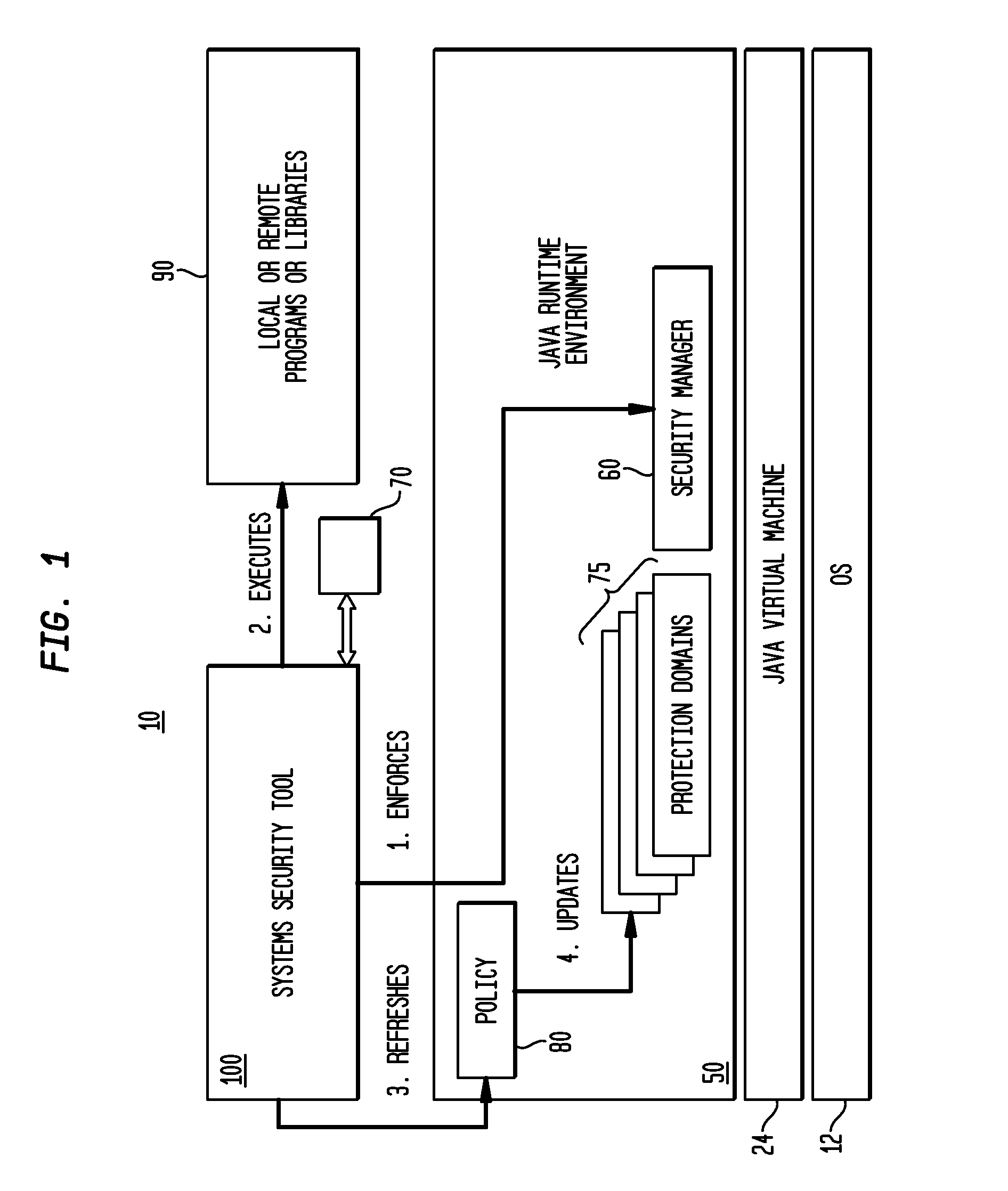Method and system for run-time dynamic and interactive identification of software authorization requirements and privileged code locations, and for validation of other software program analysis results
a software authorization and run-time dynamic technology, applied in the field of data and operation security and authorizing access to software programs, to achieve the effect of compromising the integrity of the underlying computer
- Summary
- Abstract
- Description
- Claims
- Application Information
AI Technical Summary
Benefits of technology
Problems solved by technology
Method used
Image
Examples
Embodiment Construction
[0083]The invention is directed to a run-time authorization requirement discovery tool that allows users to automatically: a) discover the security-sensitive actions attempted by a program; b) detect the program's authorization requirements; c) detect a program's privileged-code requirements; and d) configure and inspect the security policy of the program.
[0084]The automated run-time authorization and privileged-code requirement discovery tool is enabled by using reflection, a technology that allows automatically inspecting compiled code, creating objects, and invoking methods on objects and classes. The program components being analyzed are isolated from the rest of the invention implementation code as well as from the trusted libraries. This allows customizing the level of trust of the program under analysis without having to change the security configuration of other components.
[0085]Aspects of the invention will be described with reference to FIG. 1, which illustrates the comput...
PUM
 Login to View More
Login to View More Abstract
Description
Claims
Application Information
 Login to View More
Login to View More - R&D
- Intellectual Property
- Life Sciences
- Materials
- Tech Scout
- Unparalleled Data Quality
- Higher Quality Content
- 60% Fewer Hallucinations
Browse by: Latest US Patents, China's latest patents, Technical Efficacy Thesaurus, Application Domain, Technology Topic, Popular Technical Reports.
© 2025 PatSnap. All rights reserved.Legal|Privacy policy|Modern Slavery Act Transparency Statement|Sitemap|About US| Contact US: help@patsnap.com



